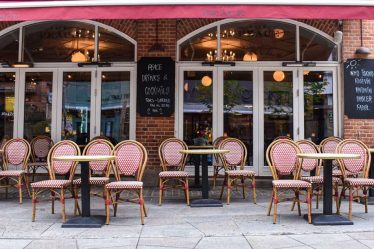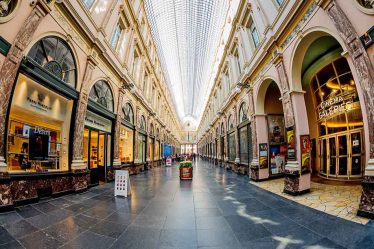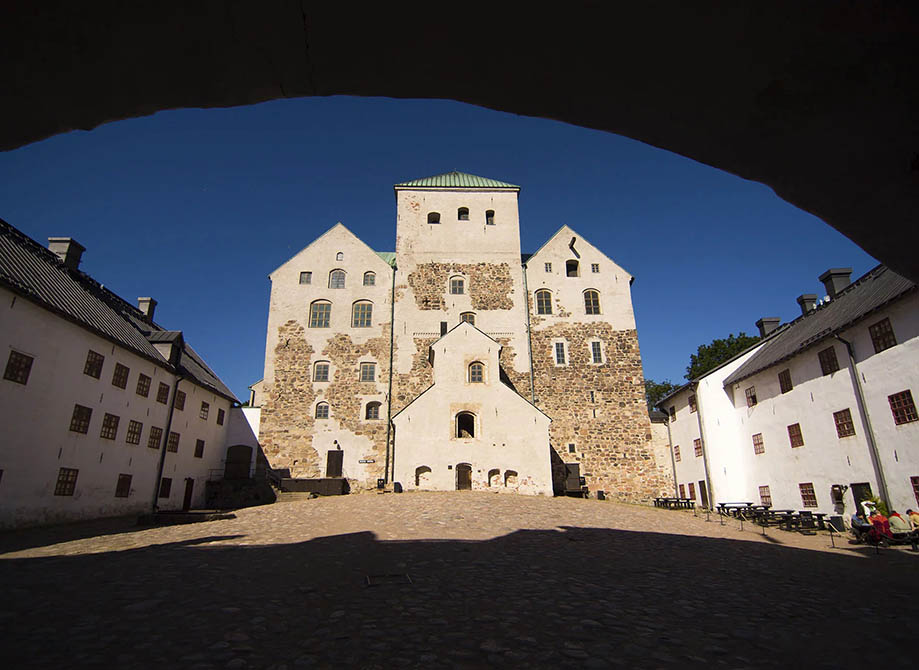
Turku wasn’t on my radar until I began to dive deeper into Finnish culture and history. Most people know Helsinki or Lapland, but few truly appreciate the historic soul of Finland: Turku. As soon as I arrived, I felt something different—something deeply rooted, authentic, and delightfully laid-back. Turku, the country’s oldest city, welcomed me not with grandeur, but with stories whispered through cobblestone alleys, riverside cafés, and medieval structures that have stood the test of time.
This is not a city that rushes to impress you. It simply exists—full of life, tradition, art, and a constant flirtation with the sea. I found myself falling for its quiet confidence and its honest charm. Let me take you on a walk through Turku, through its museums, waterfronts, eateries, and pockets of wonder, all discovered on foot with no strict itinerary—just curiosity.
Arrival and First Impressions
Stepping out of the train station, I was greeted by an environment that felt surprisingly warm despite the northern latitude. The air was crisp, but not biting, and there was an earthy scent, almost forest-like, that reminded me of how closely Finnish cities remain connected to nature.
My hotel was a short walk away—a cozy boutique spot near the Aura River. The receptionist handed me a map, smiled knowingly, and said, “You don’t need to plan too much here. Just walk. Turku will guide you.” She was right.
Aura River: The Heartbeat of Turku
My first destination was not a destination at all—it was the river. The Aura River, or Aurajoki as locals call it, cuts through the city like a living artery. Along its banks, life happens slowly but meaningfully.
I started from the upstream end, near the city center, and made my way toward the river mouth. The riverside paths are pedestrian-friendly, lined with cafés, small galleries, boats turned into restaurants, and groups of locals chatting on benches. I didn’t need Google Maps—I just followed the water.
One of the most delightful moments was stumbling upon the Föri, a charming little ferry that’s been operating since 1904. It crosses the river in under two minutes, free of charge. I rode it twice, just for the experience.
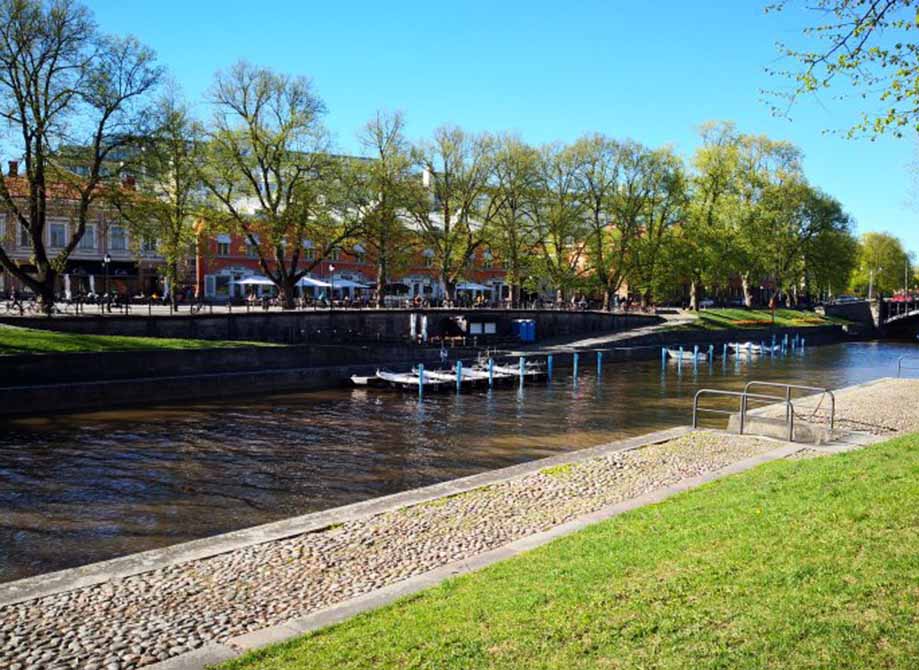
Turku Castle: Echoes from the Middle Ages
Further along the river stands Turku Castle (Turun linna), an awe-inspiring stone fortress dating back to the 13th century. The approach itself was atmospheric—seagulls crying overhead, the river gently flowing beside me, and the silhouette of the castle rising stark against the sky.
Inside, the castle is a labyrinth of historical rooms, secret staircases, and immersive exhibitions. As I walked through medieval halls and noble chambers, I could almost hear the footsteps of centuries past. There was something humbling about it—standing inside walls that had witnessed over 700 years of Finnish history.
Turku Cathedral and the Old Great Square
Heading back upriver toward the city center, I found myself at the Turku Cathedral, a magnificent Gothic structure that’s considered Finland’s most important religious building. But beyond its historical significance, what struck me was its calm majesty. The interior was quiet, lit with soft natural light, and there was a sense of peaceful timelessness that invited reflection.
Just outside the cathedral, the Old Great Square opened up, once the heart of medieval Turku. Today, it’s a cultural hub dotted with historic buildings that host art exhibitions and performances. I wandered through a small design market there, picking up a few handmade souvenirs crafted by local artists—wooden ornaments, handwoven textiles, and even a tiny sketch of the Aura River.
Museums and Hidden Corners
Turku is a city of stories, and the best way to dive into those is through its museums. My favorite was the Aboa Vetus & Ars Nova, a dual museum that blends ancient ruins and contemporary art. One minute I was walking through preserved medieval streets beneath the museum, and the next, I was standing in a modern gallery surrounded by abstract installations. It was the perfect metaphor for Turku—where the past and present coexist seamlessly.
Another gem I found was the Pharmacy Museum and Qwensel House. Tucked away in a quiet street, this museum captured the charm of an 18th-century apothecary and the home that housed it. I spent longer than I expected admiring vintage glass bottles and herbal concoctions, all while learning about Finnish medical history.
Where I Ate (and Why I’ll Be Back)
Food in Turku is simple, fresh, and surprisingly inventive. I had my first lunch at Smör, a restaurant that marries traditional Finnish ingredients with modern presentation. My dish—a perch fillet with celeriac purée and pickled chanterelles—tasted like a walk in the forest after rain.
Another memorable meal was at Nooa, a riverside spot with glass walls that gave me a perfect view of the Aura. Their seafood stew was comforting, flavorful, and made even better with a local rye beer. I also spent a relaxed evening at Kaskis, arguably Turku’s most renowned fine dining destination. It was the kind of place where every bite felt like a conversation between land and season.
For quick snacks and coffee, the Turku Market Hall was a treasure. This 19th-century indoor market offered everything from fresh berries to smoked fish to cinnamon pastries I still dream about. I chatted with a friendly vendor about Finnish cheeses and walked away with a small wedge of something creamy and delicious I couldn’t pronounce.
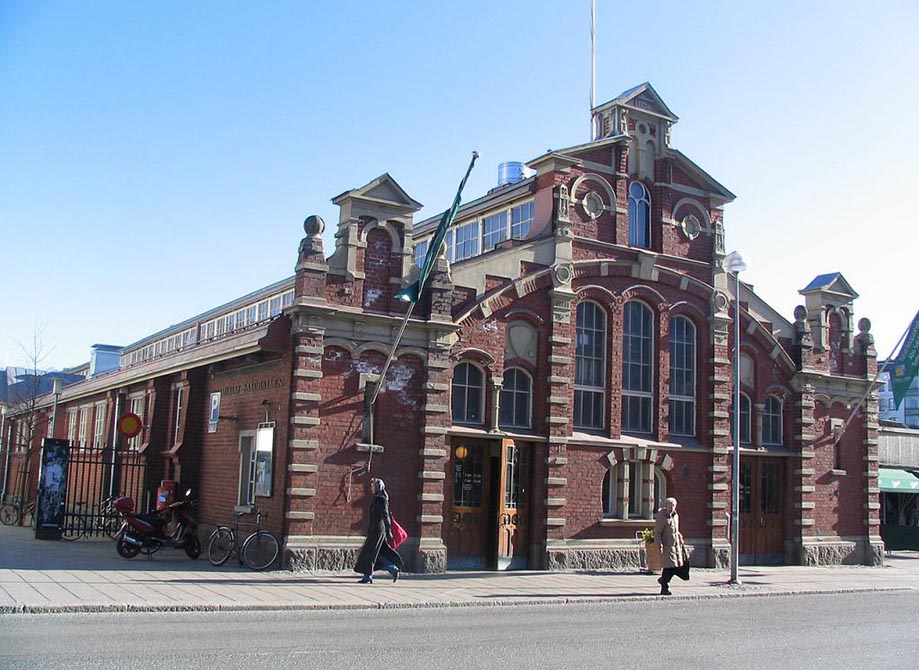
Slow Moments in the City
Turku isn’t a city that overwhelms—it whispers. And those whispers are found in the quietest moments. Sitting on a bench watching ducks glide across the river. Wandering down narrow alleys where vines creep up yellow-painted houses. Listening to street musicians in front of the library square. Browsing in secondhand bookstores where every volume seemed to have a past.
One afternoon I walked to the Ruissalo Island, a green paradise just outside the city, accessible by bus or bike. The path through the nature reserve was peaceful, the air was scented with pine, and the shoreline views were expansive. I saw a couple picnicking on a blanket, an older man sketching the scenery, and for a moment, I felt like a local—not a traveler.
The Feel of Turku
It’s hard to describe the exact feeling Turku left me with. It wasn’t just satisfaction or joy—it was something deeper, quieter, and more enduring. It was a sense of having touched the authentic core of a place. In a world where many cities try to dazzle with skyscrapers, bright lights, and an ever-changing cultural facade, Turku felt grounded. It doesn’t try to be trendy or flashy. It doesn’t need to. Its allure lies in its sincerity, in how it honors its past while embracing the present without pretension.
What struck me most was how everything seemed to exist in perfect balance. The old and the new didn’t compete; they conversed. Medieval buildings stood proudly alongside contemporary cafés and art installations. Families walked along the riverbanks, young couples shared quiet conversations on benches, and elderly locals greeted each other like old friends. The pace of life was different—not slow in a sleepy way, but thoughtful, present, and real.
As I wandered through parks, residential lanes, and riverside paths, people smiled as they passed me. There was no sense of urgency, no tension in the air. Children ran freely through open spaces, laughing and climbing trees without the constant pull of screens. The city breathed in a rhythm that felt deeply healing, and before I knew it, I was breathing in that same rhythm too.
There’s an openness here, not just in the landscape but in the attitude of the people. I spoke only a few Finnish words, but never felt like an outsider. Locals welcomed me with gentle curiosity, and I found myself having conversations that moved beyond surface-level chatter. Whether it was a bookstore owner who recommended her favorite Finnish poets or a barista who took the time to explain the differences between local roasts, everyone seemed genuinely interested in connecting.
Turku invites you to slow down—not because there’s nothing to do, but because what there is to do deserves to be savored. It’s a city that rewards you not with spectacle, but with substance. A city where a quiet walk by the river can feel as enriching as a museum visit, and where sipping coffee in a sun-dappled courtyard becomes a moment of reflection, not just a break.
If you’re someone who craves immersive travel—travel that allows you to connect with a place, not just check it off a list—then Turku is the perfect city. It may not top the typical “must-see” lists of Europe, but perhaps that’s its greatest strength. There are no crowds to fight, no selfie sticks to dodge, no tourist traps to avoid. Just an honest, elegant city inviting you to walk a little slower, see a little deeper, and feel a little more.
I left with a full heart, a phone filled with quiet river views, and a small journal packed with sketches, scribbled thoughts, and a few wine stains from late-night reflections. Turku is a place I didn’t know I needed until I was there. And now, I already want to return. Not for the photos. Not even for the sights. But for the feeling.
